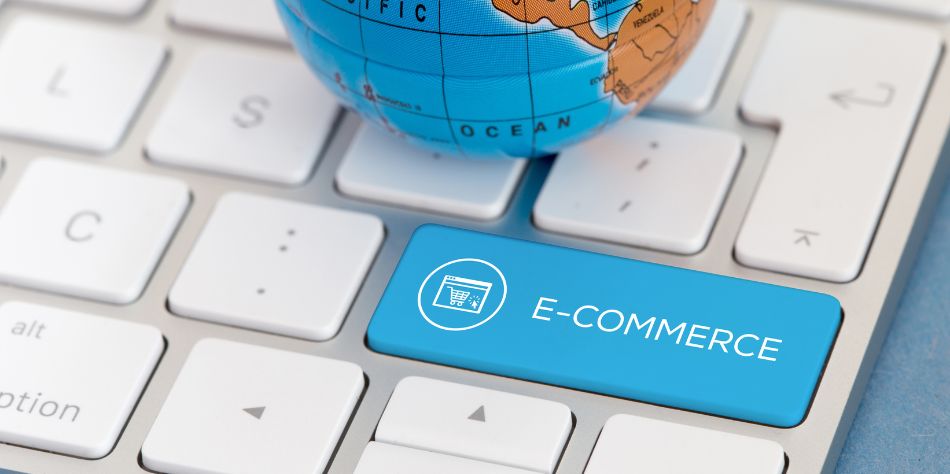The Future of E-Commerce in Pakistan: A Rapidly Growing Industry
E-commerce in Pakistan is undergoing a significant transformation, fueled by increasing internet accessibility, a growing digital-savvy population, and evolving consumer preferences. The sector has witnessed exponential growth in recent years, with projections indicating that it could generate over $5.2 billion in revenue by 2029, with a potential to expand beyond $6.7 billion. This rapid progression positions Pakistan’s e-commerce industry as a major player in the digital economy, expected to reach a valuation of approximately $7 billion in the coming years.

Key E-Commerce Trends in Pakistan by 2025
- Rising Internet Penetration and Digital Adoption
Pakistan ranks seventh globally in terms of internet users, with over 140 million active users. This growing connectivity is largely driven by the affordability and accessibility of smartphones, making it easier for businesses to reach a larger audience. The increasing number of people shopping online, engaging with digital content, and exploring e-commerce platforms has created new opportunities for businesses to expand their operations beyond traditional brick-and-mortar stores.
E-commerce companies can now tap into a broader consumer base, including customers from remote areas who previously had limited access to retail options. This trend will likely continue to accelerate, encouraging more businesses to shift towards digital platforms.
- Diversity of E-Commerce Platforms
Pakistan’s e-commerce ecosystem is not limited to a single type of online marketplace. Instead, a variety of platforms cater to different consumer needs and business models. Some of the most prominent platforms include:
- Daraz – A leading online shopping marketplace offering a wide range of products.
- PakWheels – A dedicated automobile platform for buying, selling, and reviewing vehicles.
- OLX Pakistan – A classified marketplace for goods, allowing individuals to buy and sell products directly.
- Foodpanda – A food delivery service that connects restaurants with customers through a digital platform.
This variety of platforms reflects the dynamic nature of Pakistan’s e-commerce industry, where businesses are continuously innovating to meet consumer demands in different sectors.
- The Rise of Mobile Commerce (M-Commerce)
With over 75% of internet users in Pakistan accessing the web via mobile devices, mobile commerce (M-commerce) is becoming a dominant force. Consumers now prefer shopping directly from their smartphones rather than using desktop computers, prompting businesses to optimize their websites and apps for mobile users.
To capitalize on this trend, companies must focus on:
- Mobile-friendly websites – Ensuring smooth navigation and a seamless shopping experience.
- Regional language support – Offering content in local languages to cater to diverse demographics.
- Secure mobile payment integration – Enhancing customer confidence in online transactions by introducing secure and convenient payment options.

- Social Media as a Major E-Commerce Channel
The role of social media in e-commerce has expanded beyond marketing and brand awareness. Platforms like Facebook, TikTok, and Instagram have evolved into full-fledged online marketplaces where businesses can directly sell products and engage with customers.
Social media commerce is particularly beneficial for small and medium-sized enterprises (SMEs), allowing them to reach targeted audiences without needing large advertising budgets. Live-stream shopping, influencer marketing, and direct messaging for orders are becoming popular strategies to drive sales.
- Artificial Intelligence (AI) and Data-Driven Personalization
AI is revolutionizing the e-commerce landscape by improving customer experience through personalization, predictive analytics, and automated support systems. Some key AI-driven enhancements include:
- Chatbots – Providing instant responses to customer queries and improving engagement.
- Recommendation engines – Analyzing customer behavior to suggest relevant products.
- Predictive analytics – Helping businesses forecast demand and optimize inventory management.
By leveraging AI, e-commerce businesses in Pakistan can enhance user experiences and boost sales through smarter, data-driven decision-making.
- Expanding Digital Payment Options
One of the biggest challenges facing e-commerce in Pakistan is the dominance of Cash on Delivery (COD), which accounts for a large percentage of online transactions. The lack of widespread adoption of secure online payment methods has hindered the growth of digital commerce.
However, by 2025, the adoption of secure payment solutions, digital wallets, and fintech innovations is expected to increase. Government and private sector initiatives are pushing for greater financial inclusion, making online payments more reliable and accessible. Additionally, introducing incentives like cashback offers and loyalty rewards can encourage more consumers to switch to digital payments.
Conclusion: A Bright Future for E-Commerce in Pakistan
Pakistan’s e-commerce industry is on an upward trajectory, driven by technological advancements, evolving consumer behavior, and improved digital infrastructure. With a projected market size of $7 billion, the sector holds immense potential for businesses willing to adapt to emerging trends.
Companies that embrace mobile commerce, AI-driven personalization, secure digital payments, and social media commerce will be well-positioned to thrive in this evolving landscape. As the digital economy expands, e-commerce will continue to play a pivotal role in reshaping Pakistan’s retail and business environment.